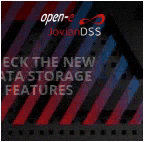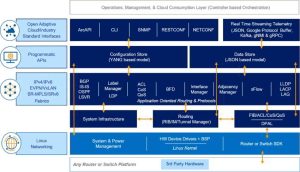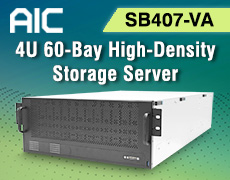OCP Global Summit 2025: Arrcus and Quanta Cloud Technology Announce Strategic Collaboration
To deliver AI-optimized rack solutions, showcase software-hardware integrated AI-ready networking platforms
This is a Press Release edited by StorageNewsletter.com on October 15, 2025 at 2:01 pmArrcus, Inc., the hyperscale networking software company and a leader in core, edge, and multi-cloud routing and switching infrastructure, and Quanta Cloud Technology (QCT), a provider in hyperscale server and switch manufacturing and a subsidiary of Quanta Computer Inc., announced a strategic collaboration to integrate the high-performance ArcOS network OS with QCT’s latest switching platforms – delivering high-bandwidth, low-latency networking for a validated, rack-level solution optimized for AI.
The solution will be officially unveiled at the 2025 Open Compute Project (OCP) Global Summit in San Jose, CA, on October 13.
“As the AI revolution accelerates, networking has become the new accelerant,” said Shekar Ayyar, chairman and CEO, Arrcus. “Together with Quanta, we are delivering a validated AI rack solution that combines our hyperscale-grade networking software with high-performance rack-scale QCT hardware to empower customers with agility, scale, and openness.”
ArcOS network OS platform architecture
At the heart of the solution is ACE-AI, Arrcus’ intelligent networking stack engineered for the unique demands of AI workloads. It supports both IP CLOS and Virtualized Distributed Routing (VDR) architectures for flexible, scalable GPU cluster designs. By enabling lossless Ethernet fabrics with RoCEv2, PFC, and ECN, and supporting dynamic routing and congestion control, ACE-AI ensures high throughput and low latency across training and inference workloads. Additionally, it delivers hardware-level telemetry – offering real-time visibility into system health, buffers, and counters – with integration into orchestration frameworks.
Arrcus will port ArcOS onto 2 of QCT’s next-gen switching platforms as part of the solution:
-
QuantaMesh TA064-IXM: 800G switch for Leaf and Spine configurations
-
QuantaMesh T1048-LYB: 1G switch for Out-of-Band (OOB) management
The joint solution is designed for:
- AI inferencing at the edge, with low-latency performance
- Scalable AI training clusters in private and hyperscale data centers
- Multitenant AI fabrics with deterministic segmentation and isolation
- Advanced application and network monitoring capabilities
Arrcus and QCT, in collaboration with Broadcom, Inc., are offering a disaggregated, high-performance, low-latency Ethernet backend network using Tomahawk 5 required for AI workloads, enabling efficient and optimized data transfers across high-performance computing clusters, AI applications, and storage systems. For the frontend network, Arrcus and QCT are leveraging existing merchant silicon, which includes the Tomahawk 5 and Trident silicon, to build a scalable Leaf-Spine fabric, providing a future-proof solution for AI and HPC-driven environments.
“Partnering with Arrcus allows QCT to deliver high-bandwidth, low latency, scalable and validated AI rack solutions to our mutual customers,” said Mike Yang, EVP, Quanta Computer and president, QCT. “Together, we’re equipping next-generation data centers with cutting-edge switching platforms that support open networking standards to meet the demands of the AI era.”
“Broadcom is proud to see our Tomahawk 5 Ethernet switching technology integrated into this joint solution from Arrcus and Quanta,” said Ram Velaga, SVP and GM, core switching group, Broadcom. “High-performance, low-latency, and scalable networking is critical for AI workloads, and this collaboration showcases the value of combining open, innovative software with platforms built on Broadcom merchant silicon. Together, we’re enabling the next generation of AI infrastructure with the performance and flexibility customers demand.”
Arrcus and QCT are also exploring additional platform integrations and finalizing a go-to-market strategy to support customer deployments and solution validation at scale. This partnership reflects both companies’ commitment to advancing open networking and building the next-gen of AI-ready infrastructure.


















 Subscribe to our free daily newsletter
Subscribe to our free daily newsletter


